Please add image or text logo

Read our latest round-up of news, top tips and ideas to make the most of your garden this November!
November marks the halfway point between autumn and winter – bringing the promise of frosty mornings, dramatic sunsets and trees in all their vibrant autumnal glory.
Despite the colder weather and shorter days, there is still plenty to be done in the garden to prepare for winter and start planning for next spring!
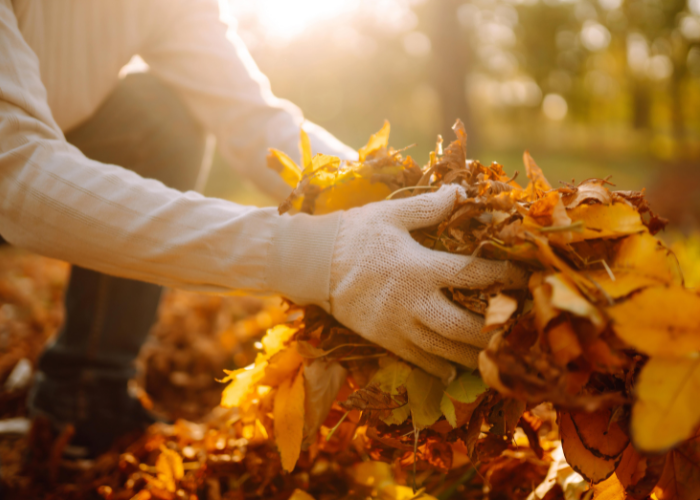
• Protect semi-tender plants – Shrubs which are best kept outside but are also semi-tender, such as pomegranates, olive and bay, can be damaged by harsh weather and so should be wrapped in horticultural fleece. This will protect the plants against most winter frosts but will require a second layer or to be brought indoors when the temperature falls below 5ºC.
• Compost refresh – Don’t forget to turn your compost heap regularly to maintain efficient decomposition even when the temperature drops. View our variety of compost bins in-store.
• Remove damaged produce from harvests – Many fruit and vegetables can be stored right through to spring, however it is important to remove any that are going off to avoid ruining the rest of the crop.
• Provide support for trees – Add stakes and ties to young trees, positioning the stake so that the tree will be blown away from it, to avoid damaging the bark. Allow branches to move freely while the roots and stem are kept still by attaching the stake lower down.
• Remove leaves from lawns and ponds – Collect any fallen leaves and allow them to decompose into leaf mould. This is perfect to add to mulch or compost.
• Add insulation to your greenhouse – Keep your plants happy over autumn and winter by adding insulation to your greenhouse.
• Plant tulip bulbs in beds and borders – Tulips will grow best in well-drained soil, in a border or bed that gets full sun but is also protected from harsh winds. Plant the bulbs twice the bulb’s width apart and at a depth of three times the bulb’s height.
• Plant in pots – Irises, hyacinths, daffodils and muscari are all fantastic and vibrant options for creating a powerful spring-flowering display using pots. Simply fill one third of a pot with compost and horticultural grit in a ratio of 2:1, then lay your bulbs on top so that they almost touch. Finally, cover the bulbs with compost to twice their height, add a layer of grit, pat down and water.
Visit any of our centres to pick up essential gardening tools!
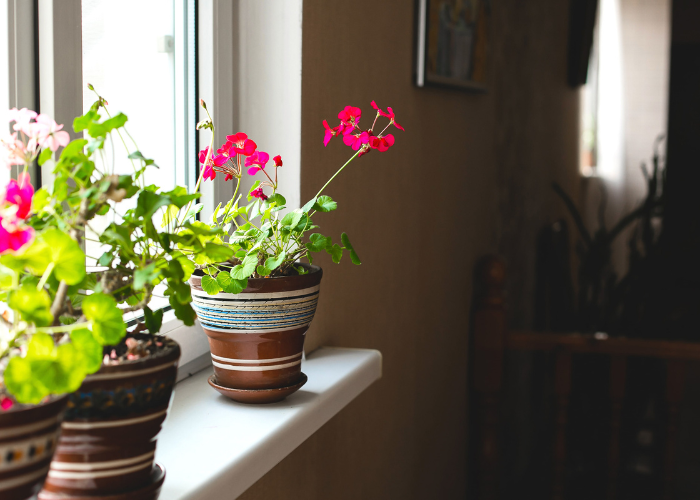
Did you know that geraniums, also known as pelargoniums, don’t have a dormant period? So although you could leave them in your garden to fend for themselves over winter, the best way to ensure they survive is to dig them up and pot them indoors!
Here are our top tips for overwintering your geraniums:
• Deadhead before digging – Remove any dead leaves and flowers from your geraniums before you bring them inside. It will also be beneficial to check for and remove any pests that could potentially spread to your other houseplants.
• Avoid the first frost – Geraniums must be kept frost-free in order to survive, so make sure you move your plants indoors before the first frost of winter. If your geraniums are already in pots outdoors, move them into smaller pots before you bring them in.
• Choose a sunny spot – Your geraniums will still need light to thrive over winter, so be sure to choose an area of your house that gets a lot of sun, ideally on a windowsill. Alternatively, you can also overwinter your geraniums in a greenhouse – but they must be kept above 5°C to avoid frost damage.
• Keep up with watering – The roots of your geraniums need to be kept moist so the plant can continue to grow. Water lightly, taking care not to overwater – the soil should be moist, not wet.
Next spring, when the time comes to move your overwintered geraniums outdoors again, be sure to wait until the risk of frost has completely passed – usually around late May or early June.
Once outside, increase watering and use general liquid feed to give your plants a boost.
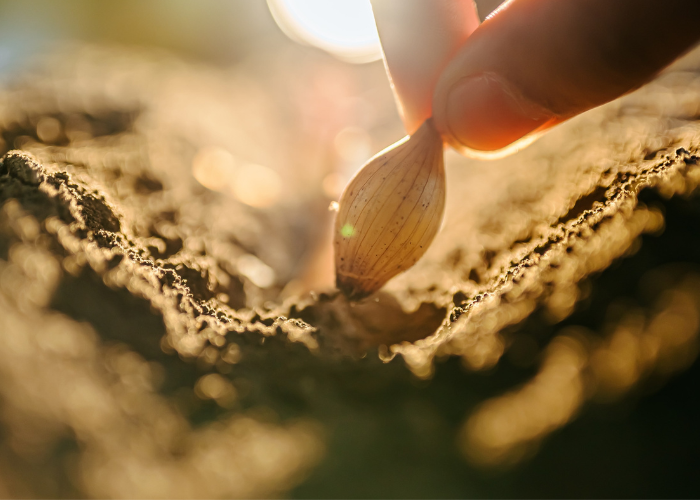
• Sow broad beans – Loosen the soil before sowing to ensure the long roots of broad beans have somewhere to go. Plant 5cm deep and 20cm apart.
• Plant apple trees – Most species of apple are self-infertile, which means they need to be planted near a tree from the same pollination group in order to develop well. Ideally, this will be in a sunny but sheltered location that drains well. Dig a shallow hole up to three times the diameter of the young plant’s root system, then place the plant in the hole and carefully cover with soil to remove all air pockets. Gently step on the covering soil to firm it.
• Plant raspberries – Opt for either bare root or container plants. Clear the site for weeds prior to planting, dig in plenty of well-rotted manure and general fertiliser. Supports for the raspberry canes are best added at the time of planting. When planting, the first roots should be 5cm or less below the soil level, and then covered with a thick mulch. After planting, cut the canes down to 25cm tall.
• Grow onions – Plant young bulbs approximately 2cm deep, so that just the tip is visible, and spaced 5-10cm apart. Firm the surrounding soil and water well. If birds are a likely pest, cover the bulbs with fleece.

Firewood season is upon us! As the days get colder and winter looms on the horizon, now is the ideal time to stock up on firewood to prepare for the colder months ahead.
Both our centres stock ready to burn, kiln-dried firewood logs, as well as smokeless coal.
Stock up now and take advantage of our three hot offers on firewood – available from Brigg and Midgley. Call now to arrange your delivery*!
Our firewood centre at Midgley also stocks products such as log stores and fireside accessories – discover our full firewood range here.
Click here to view our helpful guide on choosing the right firewood logs for you.
*to our normal delivery zones
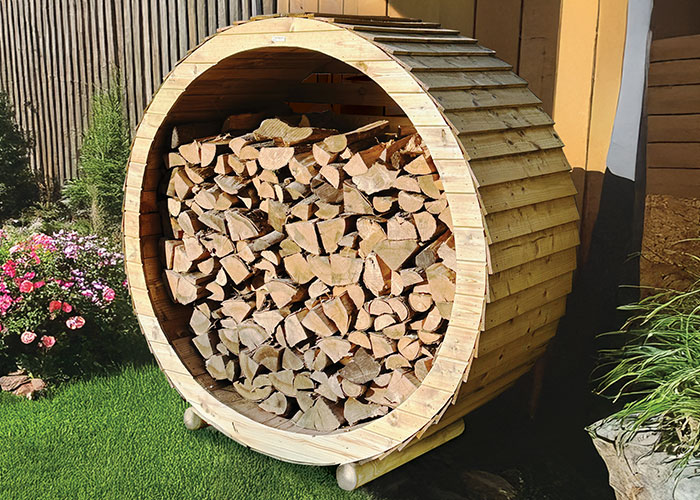
Store your firewood in style – introducing our brand-new Round Log Store, available at both of our centres!
A purpose built, outside timber log store is the neatest, and most practical outdoor firewood storage solution, for ageing and drying our hardwood and softwood logs.
Our log stores are essential for anyone wishing to store large amounts of firewood, and are available in a range of stock sizes, with larger bespoke sizes available to be built to order.
Visit us in-store to view our entire range of outdoor log storage options.
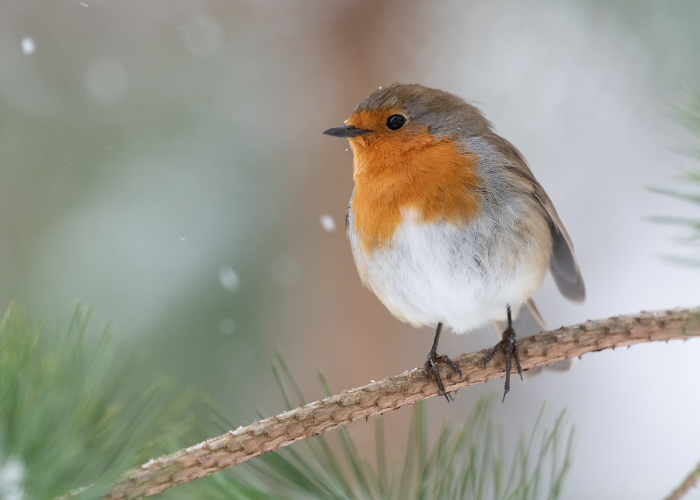
Winter can be a tough season for our feathered friends – feeding the birds over the colder months is essential to help them through frosty spells.
As the harsh winter months approach, here are some of our top birdcare tips:
• Provide clean bird boxes – November is the perfect time to clean out and sterilise bird boxes in preparation for nesting throughout the springtime.
• Fill up your bird feeders and tables – Keep bird feeders and tables filled with a variety of seed and nuts placed throughout your garden, as birds sometimes struggle to find food during the autumn and winter months. Ideally, place these in a sheltered position close to bushes and trees – this will encourage birds to approach and land.
• Accessible water sources – As the temperature drops and water freezes, it is harder for birds to find sources of water. You can help by leaving out fresh water in your garden.
• Add berries to your garden – Plant bushes, trees and shrubs that produce berries throughout the winter months to provide an extra source of sustenance.
• Create a logpile – Some bird species enjoy foraging through piles of logs and leaves for insects to eat.
• Utilise tree trunks – Rubbing fat into the bark of a tree’s trunk can provide a much-needed boost of energy to species that forage around the trunk of trees, such as goldcrests and treecreepers.
• Save shedding dog hair – When grooming your dog, save the fur that comes away and place it into a nesting material dispenser. These can be made from old peanut feeders.
Our centres stock a range of timber bird tables, bird boxes, feeders and RSPB-approved feed.
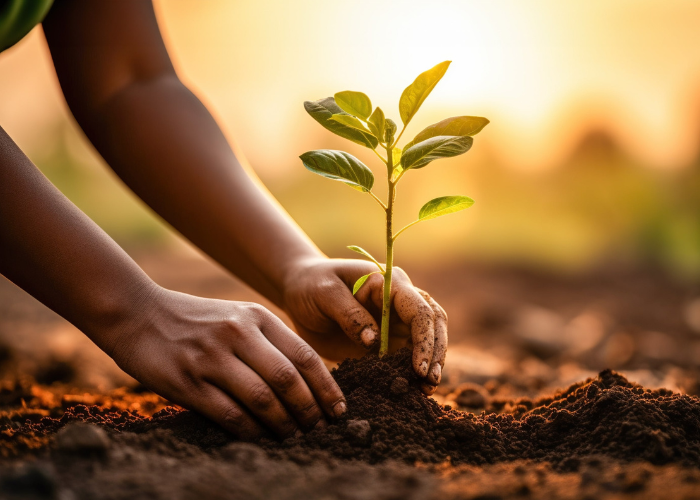
This year, National Tree Week will take place from the 23rd of November to the 1st of December.
National Tree Week is a celebration of trees and the vital role they play in creating and maintaining a healthy and sustainable environment. They also play a crucial part in combatting climate change, and provide safe habitats for wildlife.
Make a difference this year and plant a tree!
Find out more here.
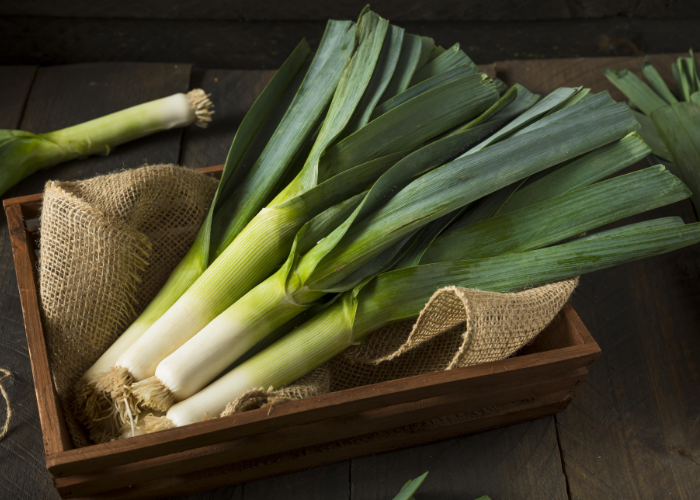
• Harvest greenhouse-grown lettuce – Many salad leaves thrive in the conditions of late autumn, including ‘Little Gem’, ‘Tom Thumb’ and ‘Rouge d’Hiver’ – they provide fresh leaves throughout autumn and into winter.
• Harvest leeks – Leeks are very hardy, so only need to be harvested as and when needed. To lift from the ground, push a fork into the soil, a little distance away from the leek to avoid damaging the stem, and loosen the soil around the roots. Gently pull the leek from the ground, as the blanched white stem could be up to 15cm long. Brush the soil off the roots and stem, and use secateurs to trim the roots.
• Harvest Brussels sprouts – Let your sprouts enjoy a few frosts before harvesting to achieve a sweeter flavour.
• Harvest carrots – Baby carrots should be ready for harvesting 50-60 days from when they were planted, while mature carrots should be ready after about 75 days. As with leeks, only harvest when needed, as carrots can last for weeks extra in the ground during the winter months – but be sure to harvest everything before the ground freezes over.

A Year Full of Pots: Container Flowers for All Seasons by Sarah Raven
A Year Full of Pots overbrims with year-round inspiration, planting ideas and expert advice. Accessible and rewarding, growing flowers in pots is a simple and enjoyable way to enhance any space, from small city plots to huge gardens.
Available from Amazon here.
“Fear not November’s challenge bold. We’ve books and friends, and hearths that never can grow cold. These make amends.”
– Alexander L. Fraser